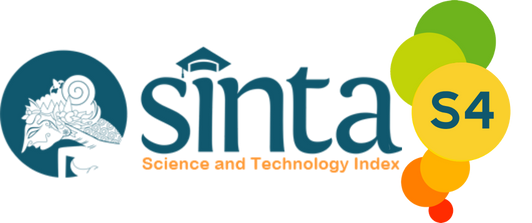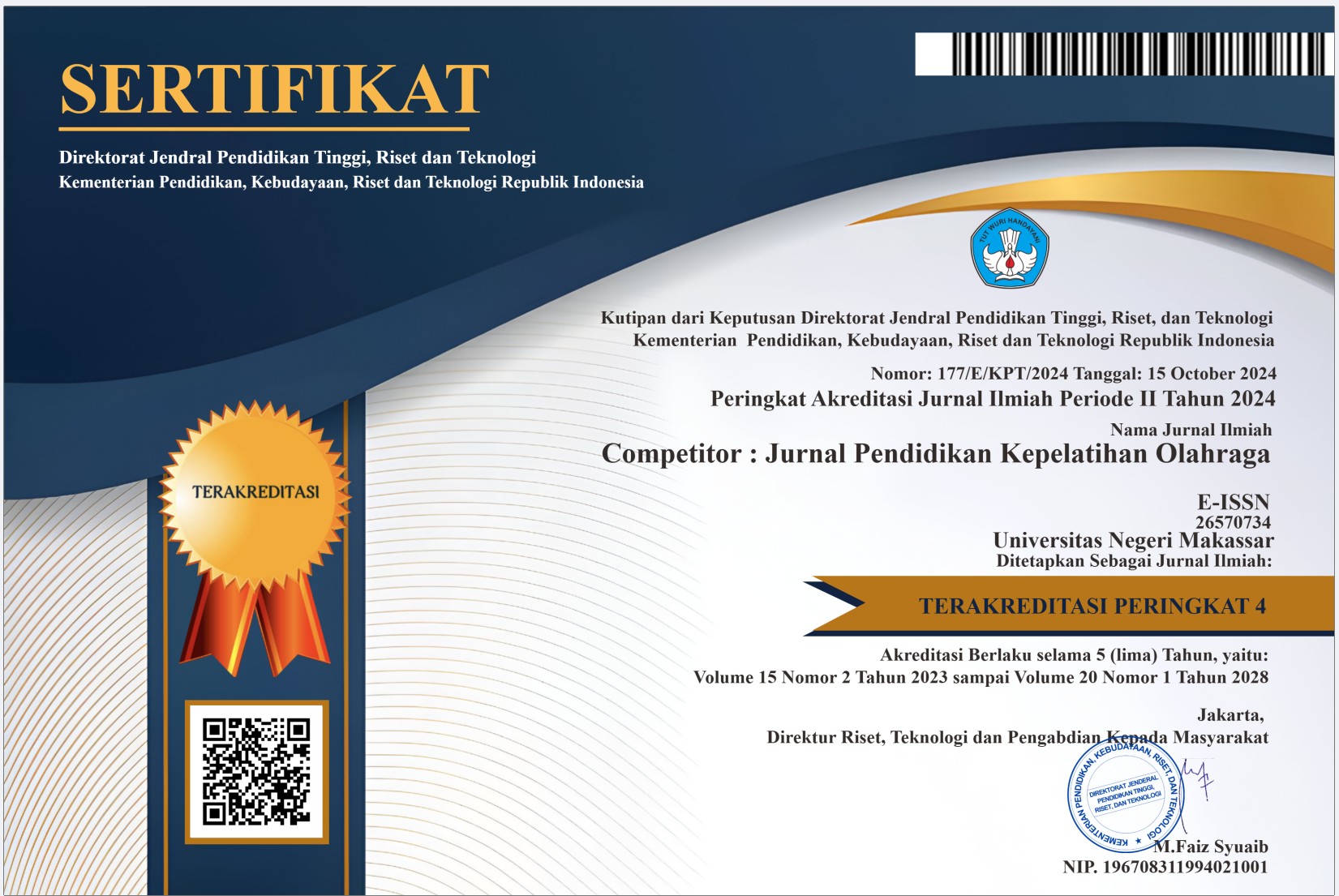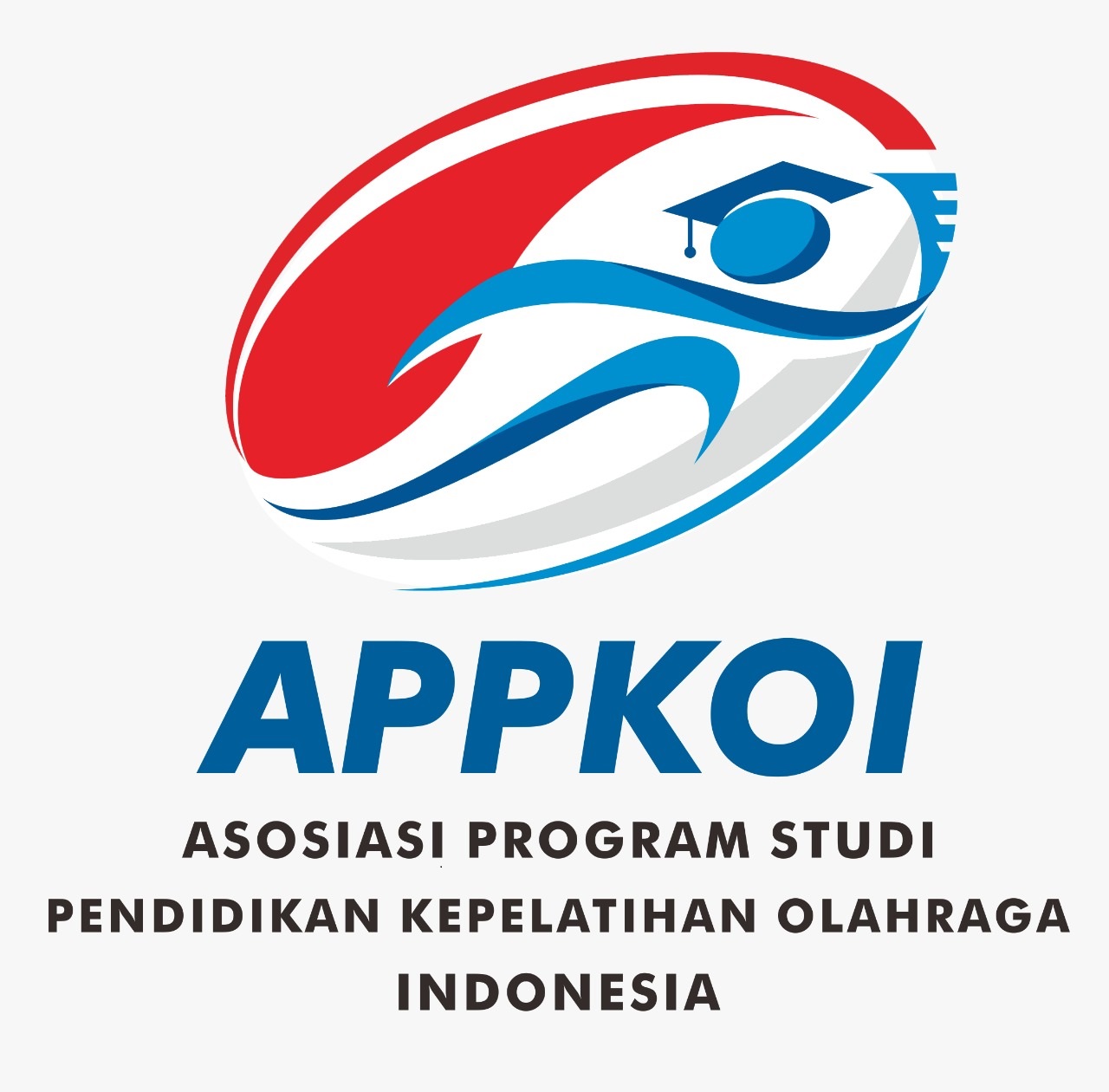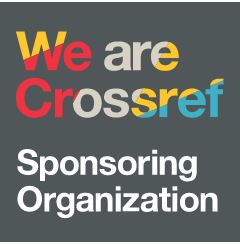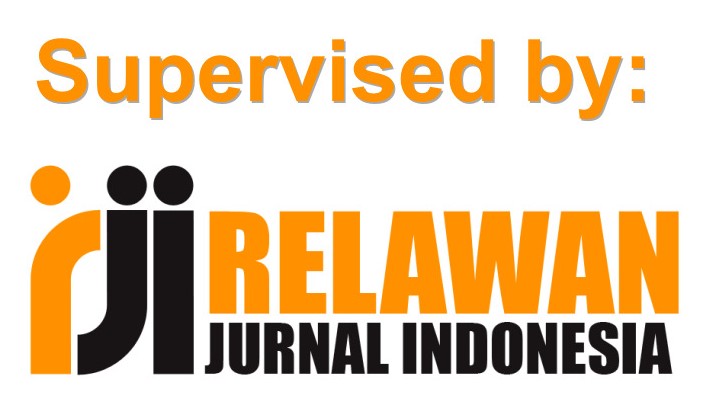Analysis of Man 1 Sinjai Students' Participation In Aerobic Physical Activity
DOI:
https://doi.org/10.26858/cjpko.v17i2.73875Keywords:
Aerobic Physical Activity, Student Participation, Motivation, Facilities, Environmental Support.Abstract
Aerobic physical activity has an important role in improving students' fitness and health. However, the level of participation of MAN 1 Sinjai students in this activity still varies. This study aims to analyse the factors that influence students' participation in aerobic physical activity, including motivation, available facilities, and environmental support, and examine the relationship between students' perceptions of the benefits of aerobic physical activity and the level of students' participation in aerobic activity. This research uses quantitative methods with a descriptive design. The population in this study were MAN 1 Sinjai students, with a sample of 50 students selected using a purposive sampling technique. Data collection techniques were carried out through questionnaires, while data analysis used descriptive statistics. The results showed that the level of student participation in aerobic physical activity varied, with most students showing a fairly good involvement, but there were still those who were neutral towards participation. Motivational factors, sports facilities, and environmental support have a significant effect on student participation, where students who are highly motivated and receive more support tend to be more active. In addition, students' perception of the benefits of aerobic physical activity had a positive relationship with their level of participation. In conclusion, increasing student participation can be achieved with strategies to increase motivation, provide better facilities, and strengthen environmental support. It is hoped that the results of this study can be the basis for designing programs to increase students' physical activity in schools.
References
Adiputra, S., & Mujiyati, M. (2017). Student Motivation and Achievement in Indonesia: A Meta-Analytic Review. Counsellor, 6(4), 150. https://doi.org/10.24036/02017648171-0-00
Bailey, R., Hillman, C., Arent, S., & Petitpas, A. (2013). Physical activity: an underestimated investment in human capital? Journal of Physical Activity & Health, 10(3), 289-308. https://doi.org/10.1123/jpah.10.3.289
Biddle, S. J. H., Gorely, T., Stensel, D. J., & et.al. (2011). Health-enhancing physical activity and sedentary behaviour in children and adolescents. Journal of Sports Sciences, 29(6), 517-529. www.americanjournal.org
Deci, E. L., & Ryan, R. M. (2000). The "what" and "why" of goal pursuits: Human needs and the self-determination of behaviour. Psychological Inquiry, 11(4), 227-268.
Dishman, R. K., Motl, R. W., Saunders, R. P., Felton, G., Ward, D. S., Dowda, M., & Pate, R. R. (2005). Enjoyment mediates the effects of a school-based physical-activity intervention. Medicine & Science in Sports & Exercise, 37(3), 478-487. https://doi.org/10.1007/978-94-007-3974-1_16
Jariono, G., Usman, A., Ihsan, A., & Nurhidayat, N. (2025). Physical Education and Sport Research Methods (1st ed.). Depok: RajaGrafindo Persada.
Lippi, G., Schena, F., & Guidi, G. (2006). Health benefits of physical activity. CMAJ: Canadian Medical Association Journal = Journal de l'Association Medicale Canadienne, 175, 776; author reply 777. https://doi.org/10.1503/cmaj.1060094
McKenzie, T. L., Sallis, J. F., Nader, P. R., Broyles, S. L., & Nelson, J. A. (2002). BEACHES: An observational system for assessing children's eating and physical activity behaviours and associated events. Journal of Applied Behaviour Analysis, 35(4), 547-556.
Pate, R. R., Davis, M. G., Robinson, T. N., Stone, E. J., McKenzie, T. L., & Young, J. C. (2006). Promoting physical activity in children and youth: a leadership role for schools: a scientific statement from the American Heart Association Council on Nutrition, Physical Activity, and Metabolism (Physical Activity Committee) in collaboration with the C. Heart Association. Circulation, 114(11), 1214-1224. https://doi.org/10.1161/CIRCULATIONAHA.106.177052
Ryan, R. M., & Deci, E. L. (2000). Self-determination theory and the facilitation of intrinsic motivation, social development, and well-being. In American Psychologist (Vol. 55, Issue 1, pp. 68-78). American Psychological Association. https://doi.org/10.1037/0003-066X.55.1.68
Sallis, J. F., Prochaska, J. J., & Taylor, W. C. (2000a). A review of correlates of physical activity in children and adolescents. Medicine and Science in Sports and Exercise, 32(5), 963-975. https://doi.org/10.1097/00005768-200005000-00014
Sallis, J. F., Prochaska, J. J., & Taylor, W. C. (2000b). A review of correlates of physical activity in children and adolescents. Medicine and Science in Sports and Exercise, 32(5), 117-125.
Trost, S. G., Pate, R. R., Sallis, J. F., Freedson, P. S., Taylor, W. C., Dowda, M., & Sirard, J. (2003). Age and gender differences in objectively measured physical activity in youth. Medicine & Science in Sports & Exercise, 34(2), 350-355.
Trudeau, F., & Shephard, R. J. (2008). Physical education, school physical activity, school sports and academic performance. The International Journal of Behavioural Nutrition and Physical Activity, 5, 10. https://doi.org/10.1186/1479-5868-5-10
Van Hecke, L., Loyen, A., Verloigne, M., van der Ploeg, H. P., Lakerveld, J., Brug, J., De Bourdeaudhuij, I., Ekelund, U., Donnelly, A., Hendriksen, I., & Deforche, B. (2016). Variation in population levels of physical activity in European children and adolescents according to cross-European studies: A systematic literature review within DEDIPAC. International Journal of Behavioural Nutrition and Physical Activity, 13(1). https://doi.org/10.1186/s12966-016-0396-4
Warburton, D. E. R., Nicol, C. W., & Bredin, S. S. D. (2006). Health benefits of physical activity: the evidence. CMAJ: Canadian Medical Association Journal = Journal de l'Association Medicale Canadienne, 174(6), 801-809. https://doi.org/10.1503/cmaj.051351
WHO. (2020). WHO Guidelines on physical activity and sedentary behaviour. In the World Health Organisation.
Downloads
Published
Issue
Section
License
Copyright (c) 2025 Muh. Reo Fadlan, Arifuddin Usman, Muh. Adnan Hudain (Author)

This work is licensed under a Creative Commons Attribution 4.0 International License.

